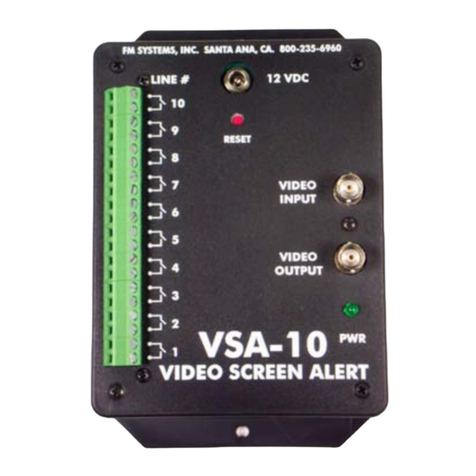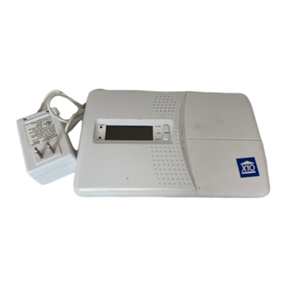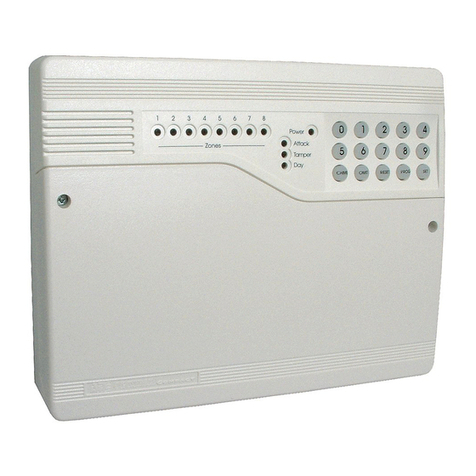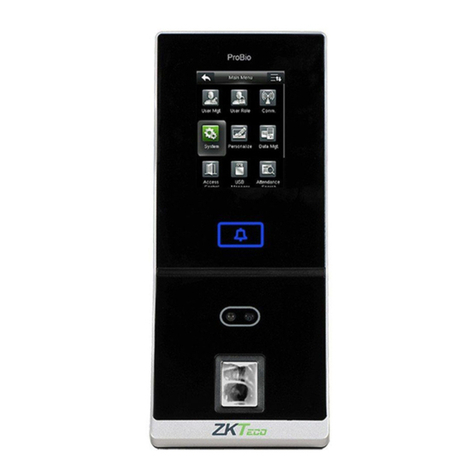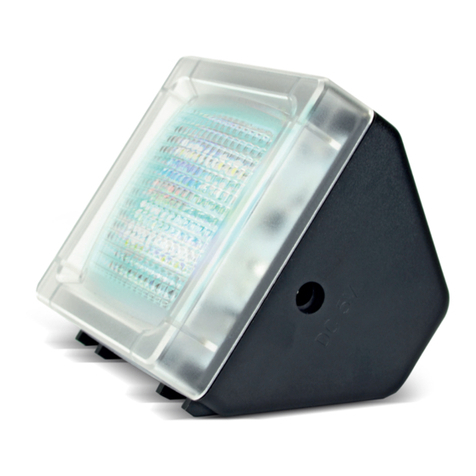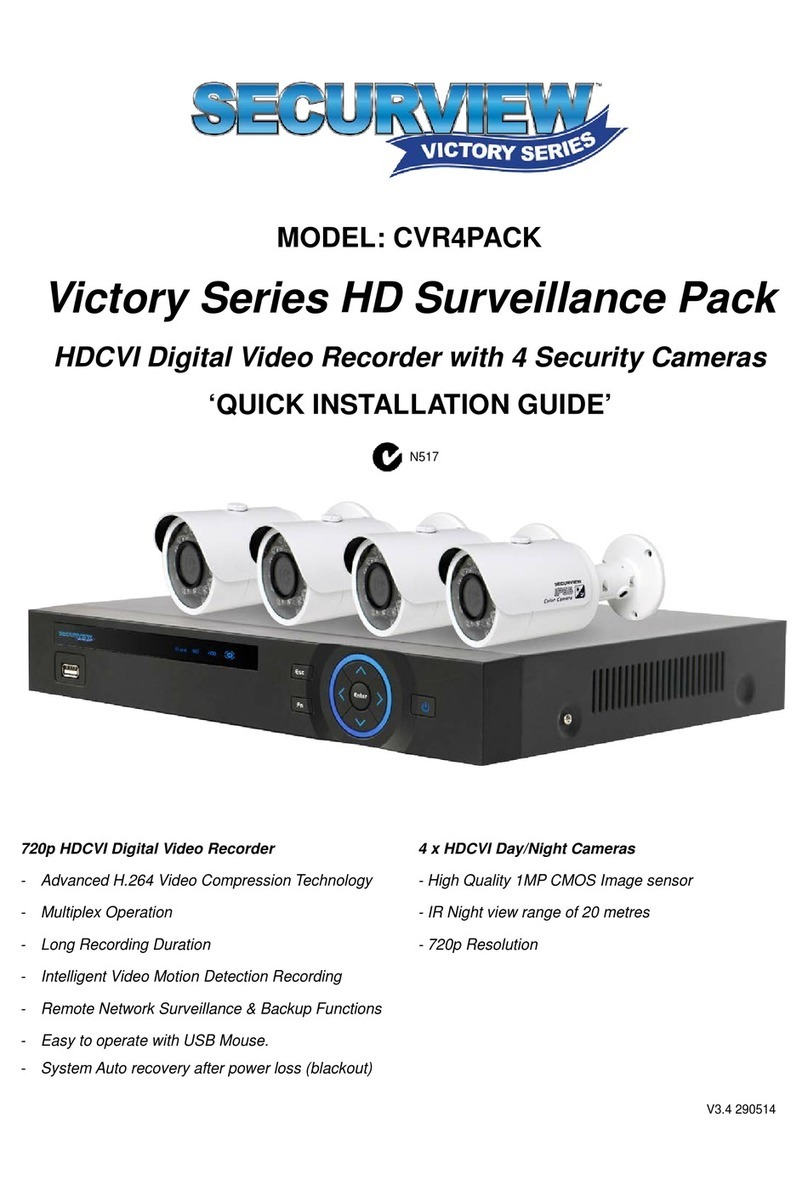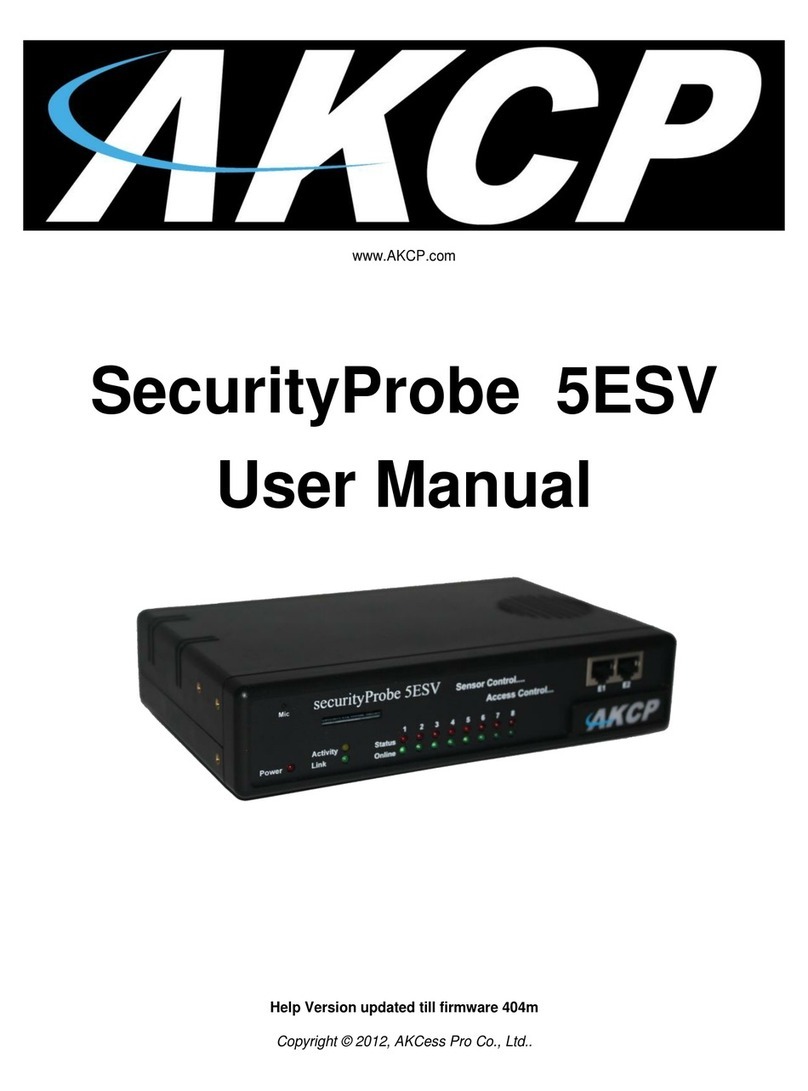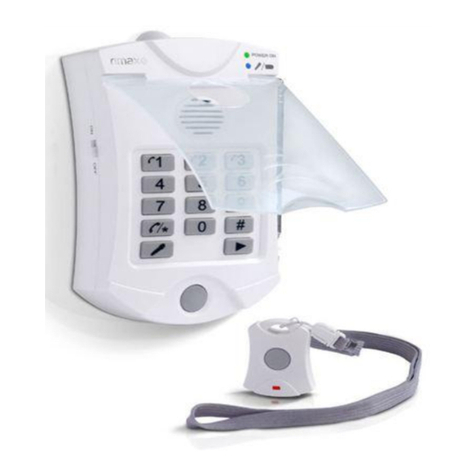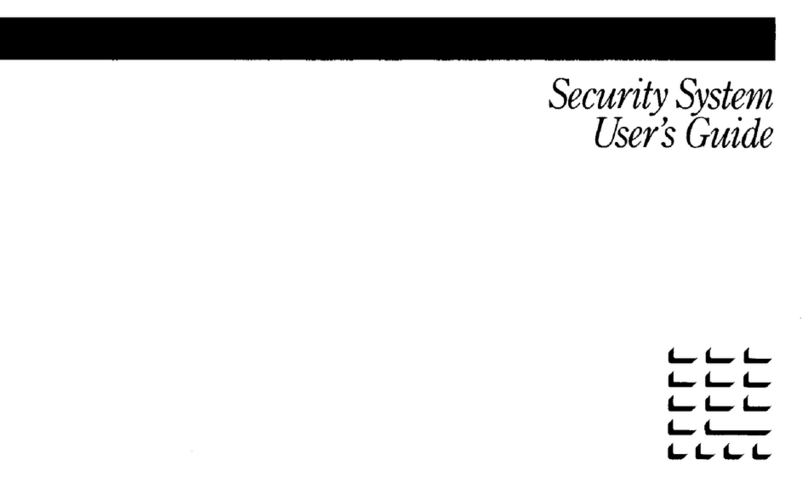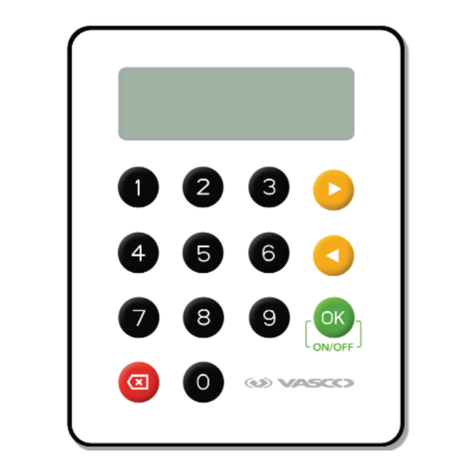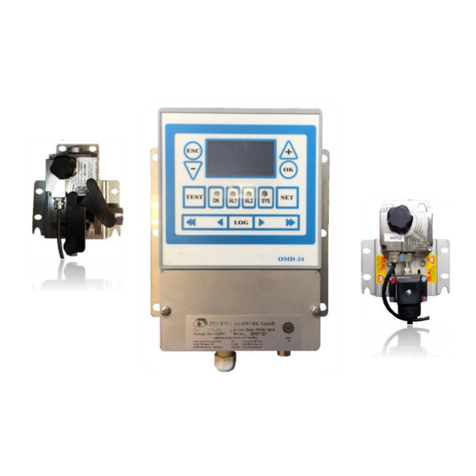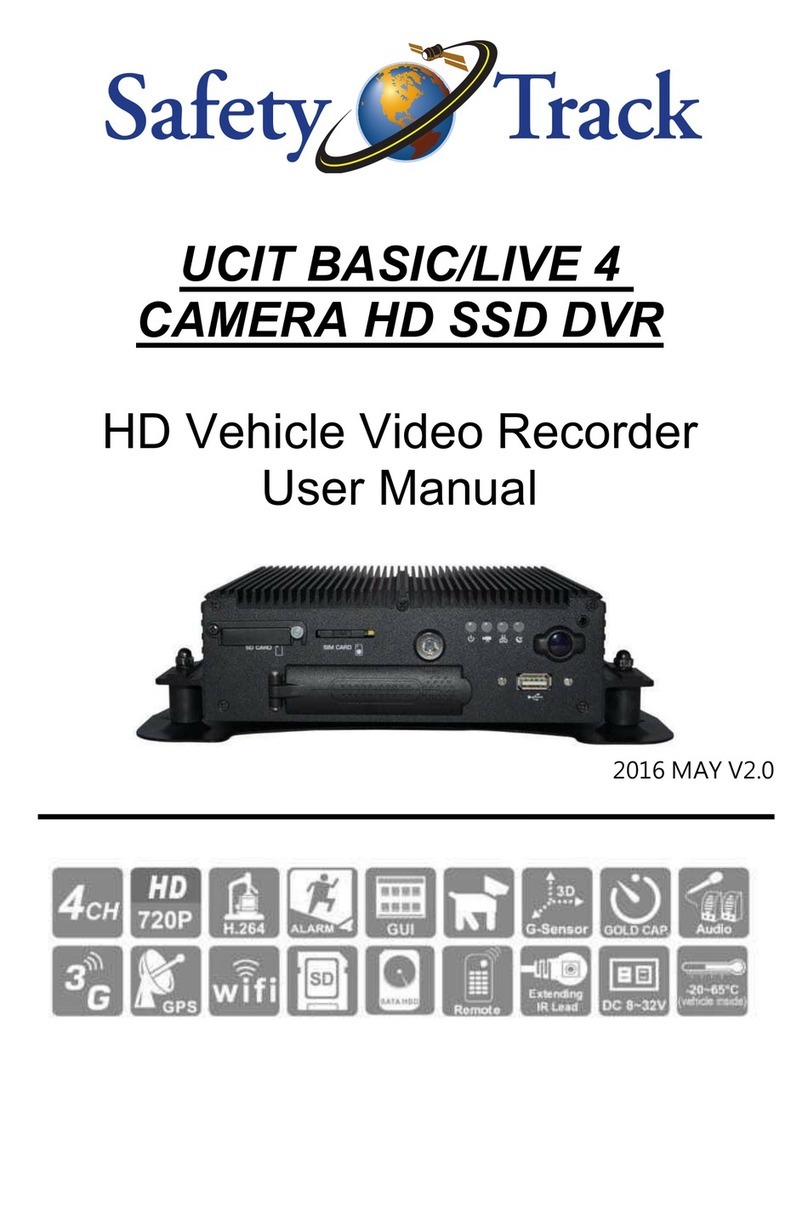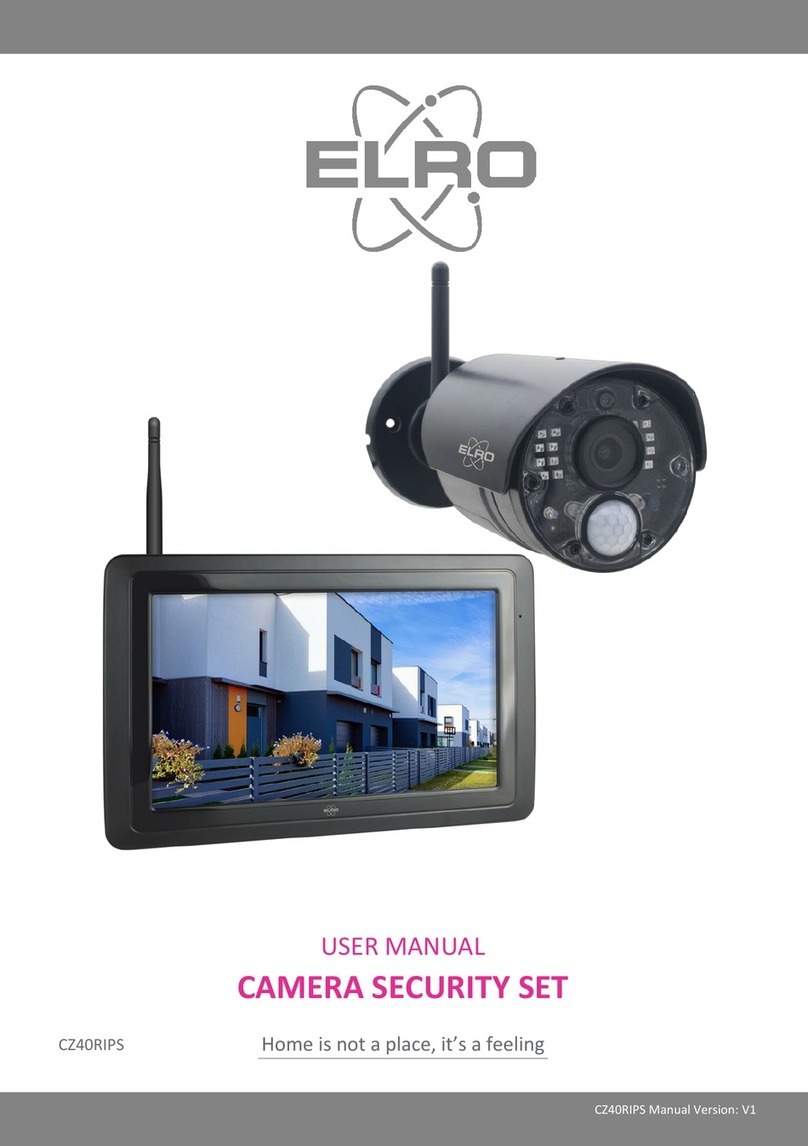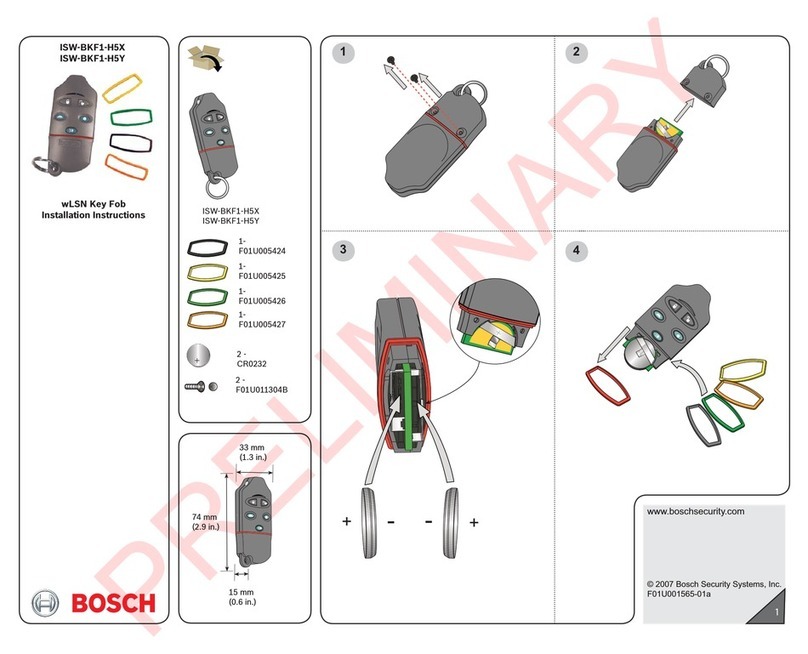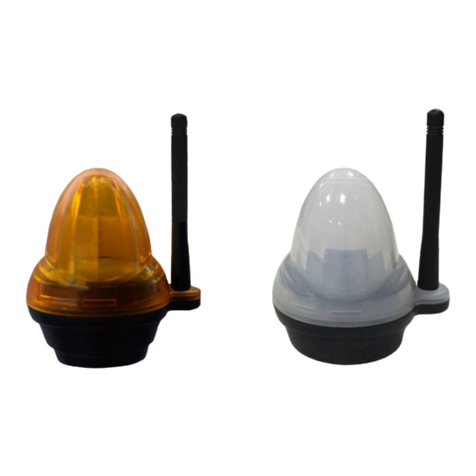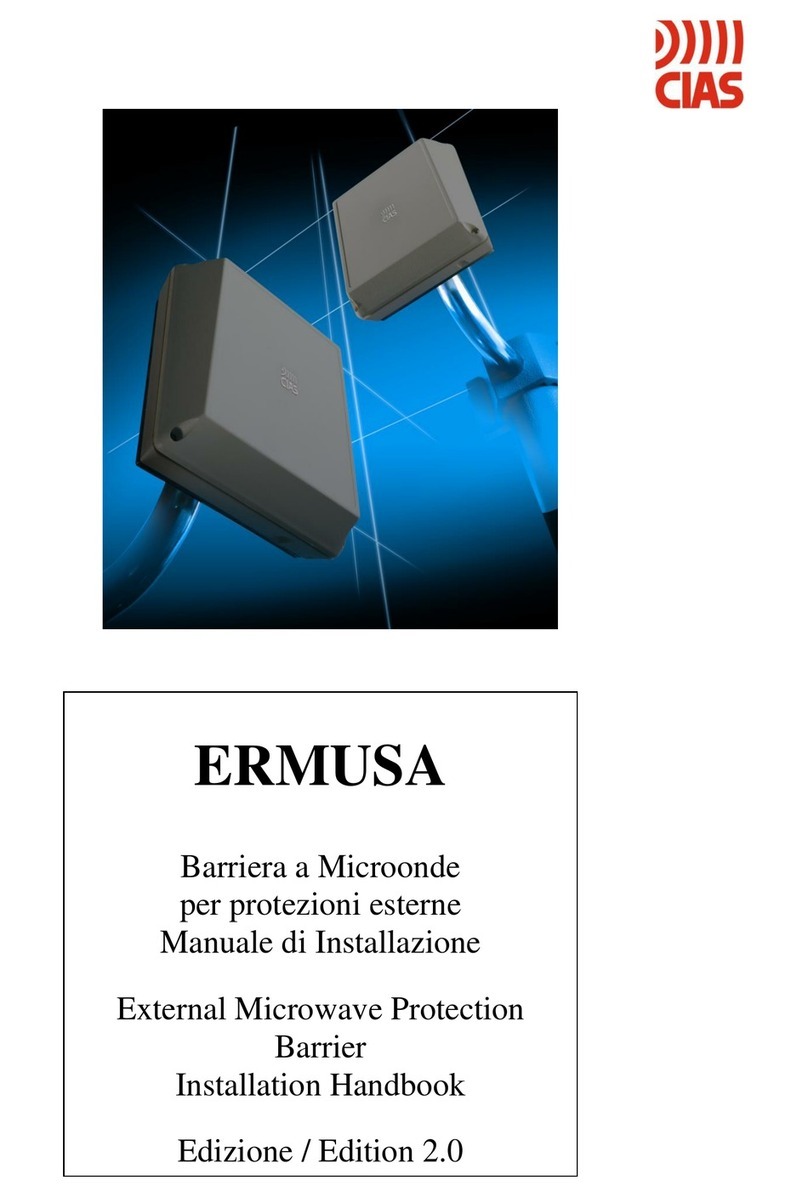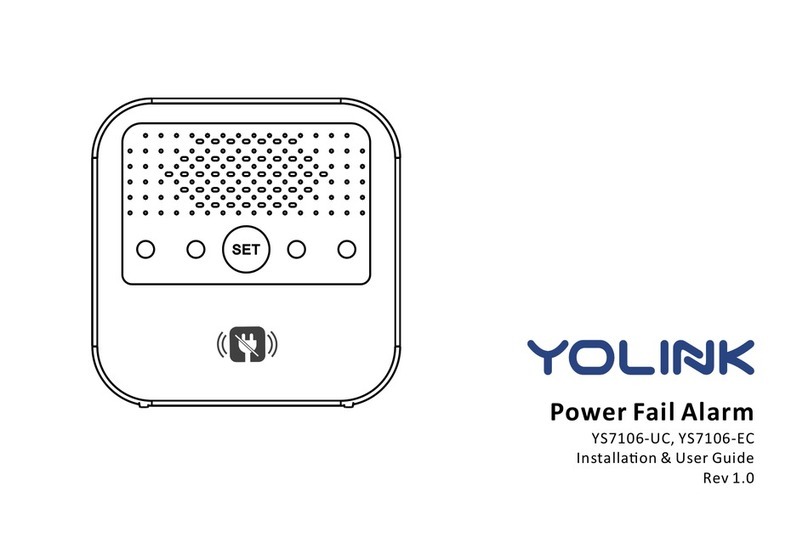FM Systems IPVS-1 User manual

IPVS-1
IP VIDEO SNIFFER
INSTRUCTION BOOK
IB6441-01

IPVS-1
IP VIDEO SNIFFER
DESCRIPTION
DISPLAY INDICATORS
INPUT SIGNALS AND CONNECTORS
CARE AND MAINTENANCE
BATTERIES
ENCLOSURE
AUXILIARY EQUIPMENT
IPVS-1isb PAGE 1 OF 3

DESCRIPTION:
The IP VIDEO SNIFFER is a hand-held meter used to check new installations and trouble
shoot existing IP video installations. It instantly displays the communication status of both transmit
and receive data lines and also indicates the status of Power Over Ethernet (P.O.E.) lines. The
meter can be used with any 10Base-T or 100Base-T Ethernet IP video system using the two RJ-
45/8 loop-through connectors. A short patch cable is used to connect to the data path at any point
in the system using T568A or T568B wired cables.
DISPLAY INDICATORS:
When the meter is connected to an IP video data system it will display two Blue LED
indicators that stay on solid, one indicates data activity on wires 1-2 and the other one indicates
data activity on wires 3-6. If the system is using P.O.E. on wire pairs 4-5 and 7-8 then one or more
of the Green LED's will be lit to indicate the status of the P.O.E. wires. The P.O.E. Green LED's
indicate the wire pair that is carrying the power for easy identification. If two pair P.O.E. is being
used on lines 1-2 and 3-6 wire pairs then at least one of the blue LEDs will be on indicating both
data and power transmission and all the green LEDs will be off. If wire pairs 1-2 and 3-6 are not
being used for P.O.E. and the blue LEDs are on then the equipment is being power locally.
The P.O.E. LED's will indicate voltages from 5 Volts up to 60 Volts. Standard 4 pair P.O.E.
implementation requires wire pairs 4-5 to be connected together and wire pairs 7-8 to also be
connected together so that no voltage should be measured between 4-5 or 7-8 wire pairs. The
P.O.E. voltage should exist between pairs 4-5 and 7-8 only. However non-standard P.O.E. can be
measured. Standard two pair P.O.E. will be indicated by the presence of data on the line.
INPUT SIGNALS AND CONNECTORS:
The unit has two RJ-45/8 data connectors on the front panel to connect the data cables
from the camera and the receiver equipment. At either end of the system use a short T568A or
T568B patch cable to connect the signal for measurement. Connecting the cables from the camera
and the receiver equipment will show both communication paths and any P.O.E. lines being used.
When the camera is transmitting video images the two blue LED's will be fully illuminated
and very bright. If video images are not being sent and only house keeping data or polling data is
being sent then the blue LED's will be dim and flashing to indicate that the system is polling the
line.
By connecting only one cable to the unit at a time you can check for reverse cables and
damaged or defective TX outputs from any equipment. Connecting only one cable to the meter
measures the TX signal being sent by that equipment. The meter will flash one blue LED to identify
the line that is being used, it also verifies that the equipment is communicating and polling the
system. By connecting the other data cable only you can also check the TX channel on the
equipment at the opposite end of the cable. To check for reverse cables pay attention to the
channel wire pair that is illuminated, be sure that the correct wire pair is being used for each type
of equipment. The camera should be using 3-6 pair and the receiver equipment should be using
the 1-2 pair unless a reverse cable is being used in the installation. By connecting only one cable
at a time this system information can be derived.
IPVS-1isb PAGE 2 OF 3

BATTERIES:
A battery compartment door allows easy access to the 9 Volt battery that powers the device.
One alkaline 9 Volt "transistor" battery is used. If the unit will not power up the battery must be
replaced by a fresh 9 Volt battery.
The battery is located in the case with access provided by a sliding plastic cover plate that has
an arrow printed on it. Slide in the direction of the arrow to open. When replacing the cover, place it
flat into the grooves so that both ends engage when closing.
ENCLOSURE:
The comfort grip hand-held case is made of flame retardant ABS plastic with a flame rating
of 94-5VA. The meter comes with an impact resistant rubber boot to protect it during daily use.
CARE AND MAINTENANCE:
No routine maintenance or test procedures are required other than battery replacement.
Attempts at field repair or adjustment will void the warranty.
The IPVS-1 is a precision measuring instrument and should be treated accordingly. While it
can withstand ordinary everyday indoor use, it should not be left outside in the rain or otherwise
mistreated. It is not waterproof. The battery should be removed if it is placed into storage to prevent
leakage of corrosive fluids from batteries as they discharge and age.
Replace batteries at least once a year even if ordinary use does not discharge the battery
because old batteries may leak and cause corrosion damage.
If the IPVS-1 fails to operate even after battery replacement, or does not read a known video
signal correctly, call the factory for a Return Authorization Number and return it to the factory for
repair.
AUXILIARY EQUIPMENT:
The MC1, MC2, and MC3 are Protective Carry Cases to house and protect the IPVS-1 and
your other test meters while being transported. These are very rugged water resistant ABS cases
with foam-lined interiors suitable for transporting this meter and other test equipment. You can order
these carry cases as an option.
IPVS-1isb PAGE 3 OF 3
This manual suits for next models
1
Table of contents
Other FM Systems Security System manuals
